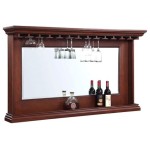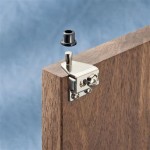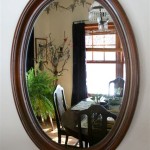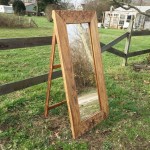How To Hang Wall Mirrors On Doors
Hanging a mirror on a door can enhance a room's aesthetic appeal and functionality. However, doors present unique challenges compared to walls. Their movement and lighter construction require careful consideration when choosing hanging methods and hardware. This article provides a comprehensive guide to safely and effectively hanging wall mirrors of various sizes on doors.
1. Assessing the Door and Mirror
Prior to initiating the hanging process, a thorough assessment of both the door and the mirror is crucial. The door's construction material, including its core type (solid or hollow), will influence the appropriate hardware choice. Solid core doors offer greater stability and can support heavier mirrors. Hollow core doors, common in interior settings, require specialized anchors to prevent damage. Measuring the mirror's dimensions and weight is essential for selecting hardware with sufficient load-bearing capacity.
Inspect the door for any existing damage or obstructions, such as wiring or plumbing, behind the intended hanging location. Consider the door's swing path to ensure the mirror won't obstruct its movement or impact adjacent walls or furniture. Marking the desired mirror position with painter's tape allows for visualization and adjustments before committing to drilling.
2. Choosing the Right Hanging Hardware
Selecting appropriate hanging hardware is paramount for securely mounting a mirror on a door. Several options cater to varying door types and mirror weights. For lighter mirrors on solid core doors, heavy-duty picture hooks or D-rings with screws might suffice. However, heavier mirrors or hollow core doors necessitate more robust solutions.
Hollow wall anchors, such as toggle bolts or molly bolts, provide a secure grip within the door's cavity. Toggle bolts require a larger hole for installation but offer exceptional strength. Molly bolts are suitable for lighter loads and require a smaller hole. For extremely heavy mirrors, using French cleats, consisting of two interlocking wooden or metal pieces, offers a highly secure and weight-distributing solution.
Adhesive mirror hangers are another option, particularly for lighter frames on smooth, non-textured doors. These eliminate the need for drilling and provide a clean installation. However, their weight capacity is limited, and removal can sometimes damage the door's finish. Therefore, they are best suited for smaller, decorative mirrors.
3. The Hanging Process: Step-by-Step
Once the door and mirror have been assessed and the appropriate hardware chosen, the hanging process can commence. Begin by marking the desired mirror location on the door with a pencil, ensuring it is level and centered. Use a measuring tape to verify accurate placement and avoid crooked hanging. If using hanging hardware requiring drilling, a power drill with the correct bit size for the chosen anchors or screws is necessary.
When drilling into a hollow core door, extreme caution is advised to avoid pushing through the door's surface. Drilling slowly and stopping once the anchor or screw is securely in place will prevent damage. For heavier mirrors, a pilot hole slightly smaller than the screw diameter can prevent the door material from splitting. After drilling, insert the chosen anchors or screws and ensure they are firmly embedded in the door.
If utilizing D-rings or wire hanging systems, attach them to the back of the mirror according to the manufacturer's instructions. Align the D-rings or wire with the installed hooks or screws on the door. Carefully hang the mirror, ensuring it is securely in place. For heavier mirrors, having an assistant can be beneficial during this step to prevent accidental dropping or damage.
After hanging, use a level to confirm the mirror's alignment. Make any necessary adjustments by slightly shifting the mirror or tightening the screws. Once satisfied with the positioning, conduct a gentle pull test to ensure the mirror is securely mounted. Regularly check the hardware and mirror’s stability, particularly on frequently used doors, to ensure continued safe usage.
For adhesive hangers, ensure the door surface is clean and dry before application. Follow the manufacturer’s instructions regarding application time and weight limits. Press the adhesive firmly against the door and hold for the recommended duration. Carefully align and attach the mirror to the adhesive, ensuring proper placement before the adhesive sets. Allow sufficient curing time before subjecting the mirror to any significant weight or movement.
Hanging a mirror on a door requires meticulous planning and execution. By following these steps and selecting appropriate hardware, individuals can enhance their living spaces with the reflective beauty and functionality of a well-placed mirror while ensuring safety and preventing damage to the door.

Over The Door Hanging Mirrors A Comprehensive Guide

3 Ways To Hang A Door Mirror Wikihow

Saving Space And Gaining Style With Over The Door Mirrors

How To Hang A Heavy Full Length Leaner Mirror On The Wall House Of Hepworths

Over The Door Hanging Mirrors A Comprehensive Guide

3 Ways To Hang A Door Mirror Wikihow

How To Hang A Heavy Full Length Leaner Mirror On The Wall House Of Hepworths

3 Ways To Hang A Door Mirror Wikihow

How To Hang A Heavy Full Length Leaner Mirror On The Wall House Of Hepworths

Saving Space And Gaining Style With Over The Door Mirrors








